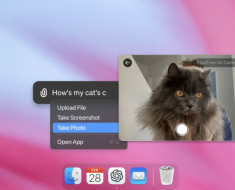
Today, we’re diving deep into the fascinating realm of education and exploring how ChatGPT, an innovative language model, can revolutionize the way we design prompts for learning environments.
Whether you’re a teacher looking to enhance your classroom activities or a student seeking effective study aids, understanding the potential of ChatGPT in education is key.
Understanding ChatGPT
Before we get into its educational applications, let’s quickly grasp what ChatGPT is all about. Developed by OpenAI, ChatGPT is a state-of-the-art language model powered by artificial intelligence. It’s designed to understand and generate human-like text based on the input it receives. Think of it as your virtual conversational partner, capable of comprehending context, generating responses, and even sparking creative ideas.
The Power of Prompts in Learning
Now, let’s talk about prompts. In the realm of education, prompts serve as valuable tools for guiding learning experiences. Whether it’s a writing assignment, a discussion topic, or a problem-solving exercise, prompts provide direction and structure while encouraging critical thinking and creativity.
Well-crafted prompts can spark curiosity, stimulate engagement, and foster meaningful learning outcomes by:
1. Guiding Learning Experiences:
Prompts act as signposts that guide students through their learning journey. They provide a clear direction and framework for exploration, helping students stay focused and on track with their learning objectives. Whether it’s a question that prompts critical thinking or a task that encourages hands-on experimentation, well-crafted prompts serve as valuable guides in the learning process.
2. Encouraging Active Engagement:
Effective prompts are designed to spark curiosity and stimulate active engagement. By presenting students with thought-provoking questions or challenging tasks, prompts encourage them to actively participate in the learning process. This engagement fosters deeper understanding and retention of knowledge as students are encouraged to grapple with concepts and ideas.
3. Fostering Creativity:
Creativity is a key component of learning, and prompts play a crucial role in fostering creative expression. Whether it’s a writing prompt that inspires imaginative storytelling or a design challenge that encourages innovative solutions, prompts provide a platform for students to explore their creativity and express themselves in meaningful ways.
4. Supporting Differentiated Instruction:
Prompts can be tailored to meet the diverse needs of students through differentiated instruction. By providing prompts that cater to different learning styles, interests, and abilities, educators can ensure that all students are appropriately challenged and supported in their learning journey. This personalized approach enhances engagement and promotes academic success for all learners.
5. Facilitating Reflection and Metacognition:
Prompts also serve as tools for fostering reflection and metacognition. By prompting students to reflect on their learning process, assess their understanding, and set goals for improvement, prompts support the development of metacognitive skills. This self-awareness and reflection enhance students’ ability to monitor and regulate their own learning, leading to greater academic growth and achievement.
Integrating ChatGPT into Learning Environments
So, how can we leverage the capabilities of ChatGPT to enhance educational prompts?
Let’s explore some innovative ways:
1. Personalized Learning Experiences
One of the remarkable features of ChatGPT is its ability to adapt to individual preferences and learning styles. By incorporating ChatGPT into learning environments, educators can create personalized prompts tailored to each student’s needs. Whether it’s generating custom quiz questions, suggesting relevant reading materials, or providing real-time feedback, ChatGPT can enhance the learning journey for every learner.
2. Stimulating Critical Thinking
Effective prompts should challenge students to think critically and analytically. With ChatGPT’s natural language processing capabilities, educators can design prompts that encourage deep reflection and exploration. Whether it’s posing thought-provoking questions or presenting complex scenarios for analysis, ChatGPT can stimulate intellectual curiosity and foster a deeper understanding of the subject matter.
3. Enhancing Collaborative Learning
Collaboration is a cornerstone of effective learning environments. ChatGPT can facilitate collaborative learning experiences by serving as a virtual mediator. Educators can design prompts that encourage students to engage in discussions, debates, and collaborative projects. By providing prompts that spark meaningful dialogue and collaboration, ChatGPT can transform traditional classrooms into vibrant learning communities.
4. Generating Creative Writing Prompts
Writing assignments are a staple in many educational settings. With ChatGPT’s natural language generation capabilities, educators can generate an endless array of creative writing prompts. From imaginative storytelling prompts to persuasive essay topics, ChatGPT can inspire students to unleash their creativity and express themselves through writing.
5. Providing Instant Feedback and Support
Timely feedback is essential for student growth and learning. ChatGPT can play a crucial role in providing instant feedback and support to students. Whether it’s answering questions, clarifying concepts, or providing additional resources, ChatGPT can serve as a valuable virtual assistant, available 24/7 to support students in their learning journey.
Best Practices for Designing Prompts with ChatGPT
Now that we’ve explored the various ways ChatGPT can enhance educational prompts, let’s discuss some best practices for designing prompts in learning environments:
- Clarity and Conciseness: Ensure that prompts are clear, concise, and easy to understand. Avoid ambiguity and provide clear instructions to guide students.
- Relevance and Context: Tailor prompts to the specific learning objectives and context of the lesson. Make sure prompts are relevant and aligned with the overall learning goals.
- Engagement and Creativity: Design prompts that spark curiosity, creativity, and critical thinking. Encourage students to think outside the box and explore new ideas and perspectives.
- Feedback and Reflection: Incorporate opportunities for feedback and reflection into prompts. Encourage students to reflect on their learning process and provide constructive feedback to their peers.
- Accessibility and Inclusivity: Ensure that prompts are accessible to all students, regardless of their background or abilities. Consider diverse learning needs and provide alternative formats or accommodations as needed.
Conclusion
ChatGPT holds immense potential for transforming educational prompts and enhancing learning environments. By leveraging its natural language processing capabilities, educators can create personalized, engaging, and impactful prompts that stimulate critical thinking, foster creativity, and support student learning.
Whether it’s generating custom quiz questions, facilitating collaborative discussions, or providing instant feedback, ChatGPT can revolutionize the way we design prompts for educational settings.
So, let’s harness the power of ChatGPT to inspire and empower the next generation of learners!
Now that you’re equipped with insights into the synergy between ChatGPT and education, it’s time to embark on your own journey of exploration and innovation in the realm of learning.
Remember, the possibilities are endless when we combine the power of technology with the art of teaching.
*******
Disclaimer: While ChatGPT offers exciting opportunities for enhancing educational prompts, it’s important to approach its integration into learning environments thoughtfully and ethically.
Always consider the potential impact on students and adhere to best practices for responsible AI use in education.





